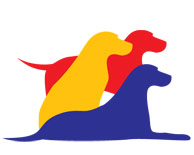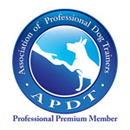To cure the problem of a dog jumping on people, many dog trainers recommend teaching a dog to sit. Training the dog to sit instead of jump can be an excellent idea. However, there is a potential downfall. The dog jumps and is asked to sit. The dog sits and is rewarded. The sit is reinforced, but the jump is also reinforced. Oh no! If you cannot break the pattern of jump followed by sit, you will never get a well-mannered dog.
A similar pattern is often found when training your dog to walk on a leash. You and your dog walk around the block. At times the dog begins to pull on the leash, and you respond. Then your dog is good for a moment, and you reward him. Oh no! You have rewarded the polite leash walking, but you have also rewarded the pulling. Remember to reward your dog while he is walking nicely on leash, before he is naughty.
No matter what you are training your dog to do, always be aware of rewarding the bad behavior that immediately precedes the good behavior you wish to reward. If the undesirable behavior does not decrease, it may be because you have rewarded that undesirable behavior.
Sometimes a dog’s unwanted behavior is rewarded, and we don’t even realize it. For example, if your dog is pulling on the leash, and you a walking in the direction the dog is pulling, the dog is being rewarded. If pulling on the leash never resulted in the dog moving in the direction the dog wanted to go, the dog would not pull on the leash nearly as much. If your dog pulls, you should immediately u-turn, and go the opposite direction. Your dog will learn to walk nicely on a leash more quickly, because he is no longer rewarded for pulling.
The “horse whisperer” Monty Roberts calls horses “into pressure” animals. That is, if you push a horse away, the horse will lean into or move toward the pressure. Dogs might also be called “into pressure” animals. If a dog feels his collar pulling against his neck, his is likely to lean into the pressure. We humans, not understanding this, pull even harder to get the dog to move in the way that we want.
Dogs must be taught what to do when pressure is applied to the collar/leash. With a handful of treats and your dog on a leash, toss a treat. You want the treat to land in a location that your dog cannot reach without pulling on the leash. Make sure your dog does NOT get to the treat! Hang on to the leash and wait. Your dog will pull on the leash, trying to get to the treat. Eventually, your dog will give up on the treat, and look at you, or even better, move toward you. Yea! Give your dog a treat. Then walk with your dog to the dropped treat. Let your dog eat the thrown treat. Repeat! Do this exercise often and in many different locations. Continue to practice then you and your dog will be on your way to pleasant walks together.
Happy Training!
Tricia Fagan
Certified Professional Dog Trainer – Knowledge Assessed
DogS Gone Good
trainer @ dogSgonegood.com (remove spaces to send an email)
(713) 557-1949



